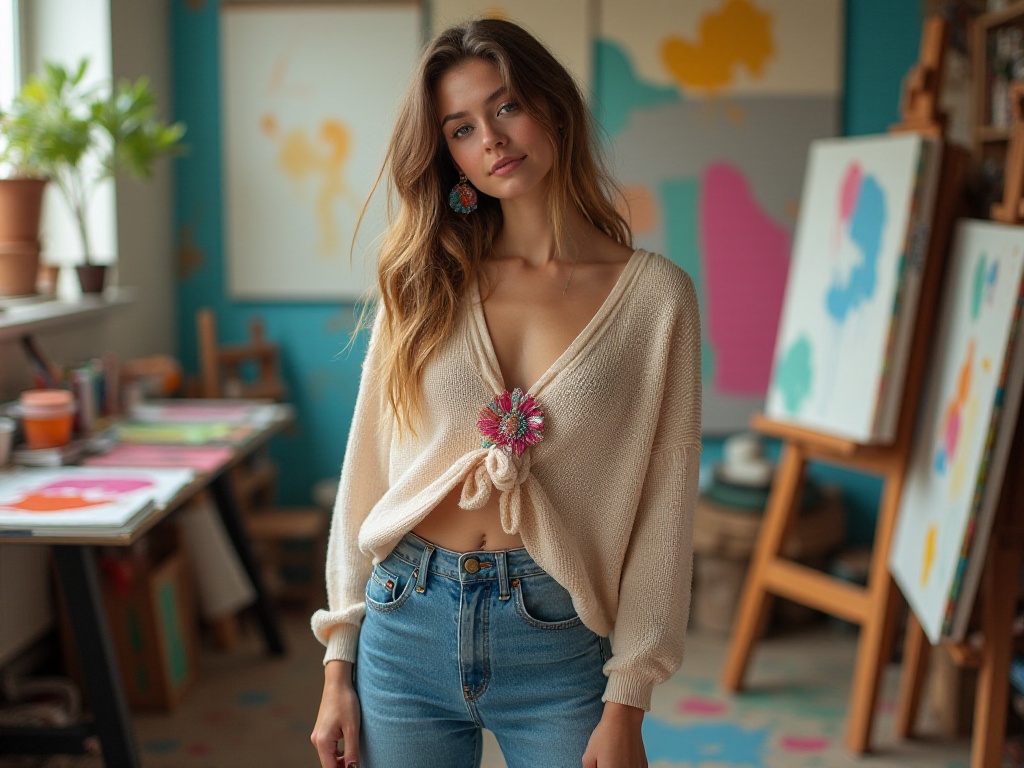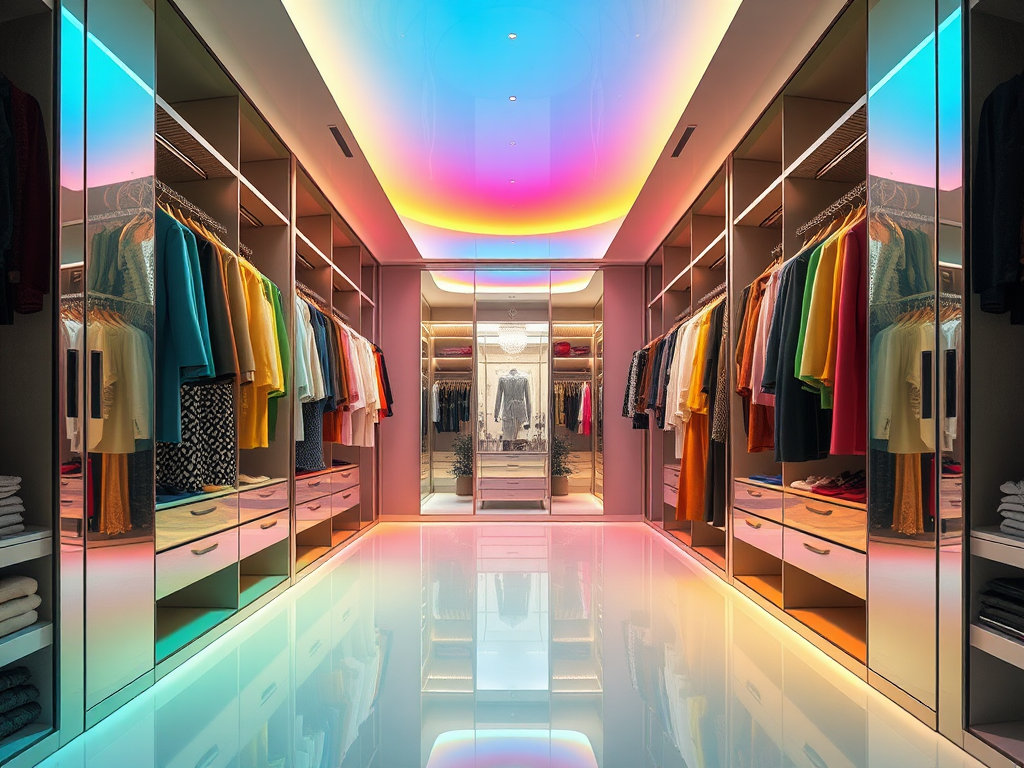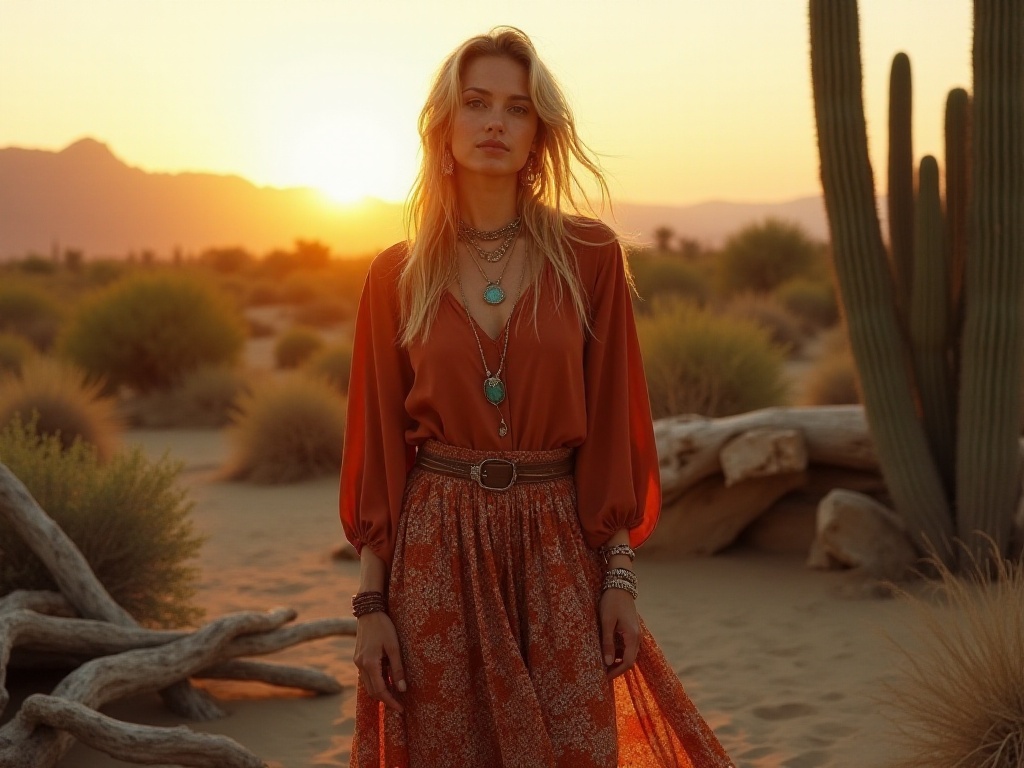Introduction
Lying on the couch scrolling through my phone, I suddenly received an SOS message from my friend: "Help! I have an important event tomorrow but don't know what to wear. My closet is full of clothes but feels like nothing is wearable!" This reminded me of my own past experiences - a closet packed full but always feeling like there were no suitable combinations. Every shopping trip would turn into an uncontrollable spree, only to find these clothes didn't match well when I got home. After years of exploration and practice, I've finally found some practical styling secrets that I'd like to share with everyone today.
Skin Tone Code
When it comes to styling, the most basic and important thing is understanding your skin tone characteristics. I remember when I first started working, I would immediately buy clothes recommended by bloggers, only to find I couldn't pull them off once received. It wasn't until a stylist friend pointed out that my color choices completely clashed with my skin tone that I started paying attention to this issue.
Through years of research and practice, I've found that Asian skin tones can mainly be divided into three types: warm yellow, neutral, and cool white. Many might ask: how do you determine which type you are? There's actually a super simple trick - find a sunny afternoon, stand in natural light, and carefully observe the color of the veins on the inside of your wrist. If your veins appear purple-blue, congratulations, you have cool white skin; if they're blue-green, you have neutral skin; if they're yellowish-green, that's warm yellow skin.
I myself have typical warm yellow skin, and this discovery completely changed my style. I used to think black, white and gray were the most versatile, so I would rotate between buying clothes in these three colors. But every time I looked in the mirror, I felt my complexion looked particularly dull and lifeless. Later, on my stylist friend's advice, I started trying some warm-toned clothes, like camel, beige, and olive earth tones. The effect was surprisingly good - I immediately looked more radiant and energetic.
Speaking of specific color matching, sisters with warm yellow skin can boldly try various warm earth tones. For example, the most basic camel color looks particularly elegant whether in sweaters or coats. Beige is also a great choice, especially in spring and fall - a beige cardigan is incredibly versatile. While many people think olive green is difficult to wear, it's actually very suitable for warm yellow skin if you choose the right shade.
For friends with cool white skin, you're really lucky! You can perfectly pull off basically all cool tones. Light blues and purples especially look great and make your skin appear whiter. Plus, basic colors like black, white and gray all suit you well - you could say you're blessed with fortunate skin.
As for friends with neutral skin tone, you're the easiest to dress because you can try both warm and cool tones. However, when choosing colors, you can select based on your condition and occasion that day. For example, when you're not feeling your best, you can choose some warm tones to brighten your complexion; for formal occasions, cool tones will make you appear more professional.
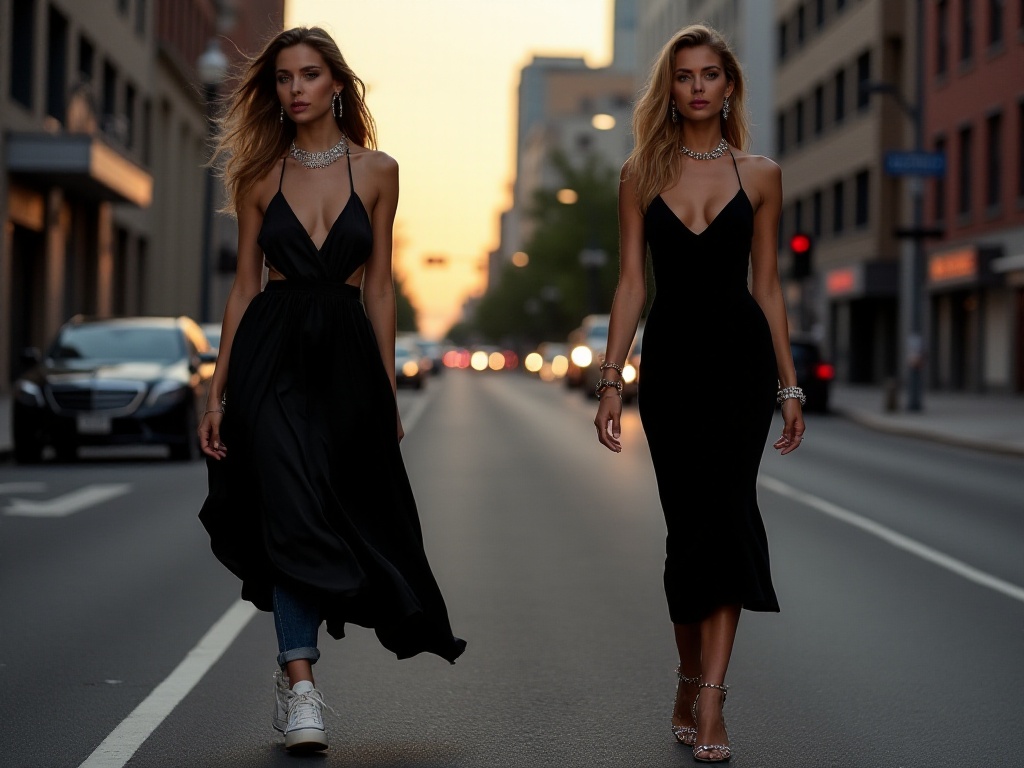
Investment Philosophy
When it comes to buying clothes, my current philosophy is "less but better." I remember when I first started working, I would go shopping every weekend and couldn't resist buying anything that was cheap. As a result, my closet was full of clothes, but there were few pieces I could actually wear regularly. Those cheap clothes would lose shape and color after a few wears - either the collar would deform or pills would form - and they would ultimately be quietly discarded.
After years of experience, I now pay more attention to quality and fit when buying clothes. I'd rather spend more money on one good piece than buy a bunch of average quality items. Last winter, I spent over 2000 on a cashmere coat, and at the time I wondered if I was being too extravagant. But after wearing this coat for a winter, both its warmth and appearance were excellent. I've now worn it for two years and it's still crisp, not looking old at all. Compared to those few hundred yuan coats I bought before, which looked worn after one winter, this more expensive piece actually proved more economical.
Moreover, you need to learn to invest in basics. For example, a well-fitted white shirt with good fabric and tailoring might be more expensive, but it won't go out of style even after three years. I have a white shirt I bought from a niche designer brand when I first started working, which cost nearly 1000 yuan. Although the price wasn't cheap, the shirt has a particularly good fit, comfortable fabric, and doesn't wrinkle easily. I've worn it for four years now, and it's still one of my most frequently worn items.
Besides basics, some classic style bags and shoes are also worth investing in. For example, a pair of versatile black heels or a simple leather bag might require a larger initial investment, but they can accompany you for many years. I really regret not properly investing in these items earlier, instead spending money on trendy pieces that felt outdated after a short while.

The Art of Layering
In my view, one of the most important styling techniques is learning to layer. Especially during seasonal transitions, using layering can both cope with changing weather and make the overall look more dimensional.
My most frequently used formula is: inner base layer + cardigan + outer coat. This styling formula is absolutely versatile! When leaving home in the morning when it might still be cold, wear the full set; by noon when the sun comes out, take off the coat and just wear the base layer and cardigan; if the temperature drops in the afternoon, put the coat back on. This styling method is particularly suitable for the office, where AC temperatures fluctuate, allowing you to adjust accordingly.
When choosing base layers, I pay special attention to fabric comfort. For fitted base layers, it's best to choose all-cotton or modal fabrics, which are more comfortable to wear and less likely to create static. For cardigans, I suggest having several of different thicknesses - thinner ones suitable for early spring and early autumn, thicker ones that can transition into winter.
The choice of outerwear is also important. I usually have a trench coat, a blazer, and a down jacket. The trench coat is the most versatile, suitable for both commuting and dates; the blazer can make the overall look more formal; the down jacket is a must-have for winter warmth.
For color combinations, I usually choose one main color tone, then match it with different shades of the same color family. For example, one of my favorite combinations is: off-white turtleneck base layer + camel cashmere cardigan + dark brown wool coat. This combination looks particularly harmonious and has a high-end feel.

Accessory Magic
When it comes to styling, we must mention the importance of accessories. Many people might think accessories are optional, but they're actually key to elevating the overall look. Just like makeup - while a good base is important, without finishing touches, the whole look will seem flat.
Take the most basic white T-shirt and jeans combination - wearing just these might seem too casual. But if you add a refined belt and a simple necklace, the overall look immediately appears more tasteful. I particularly like using accessories to elevate my look. For example, at work, a simple pearl necklace can make the overall outfit look more polished.
When choosing accessories, I suggest investing in some versatile styles. For example, a quality belt should be genuine leather - though more expensive, it can be used for many years. For jewelry, I would suggest having some basic styles like pearl necklaces and simple studs, which are styles you can wear daily.
Bags are also important accessories. My suggestion is to have several bags for different occasions: a commuter bag that can fit a laptop and daily essentials; a small shoulder bag suitable for dates or shopping; and a more formal clutch for formal occasions.
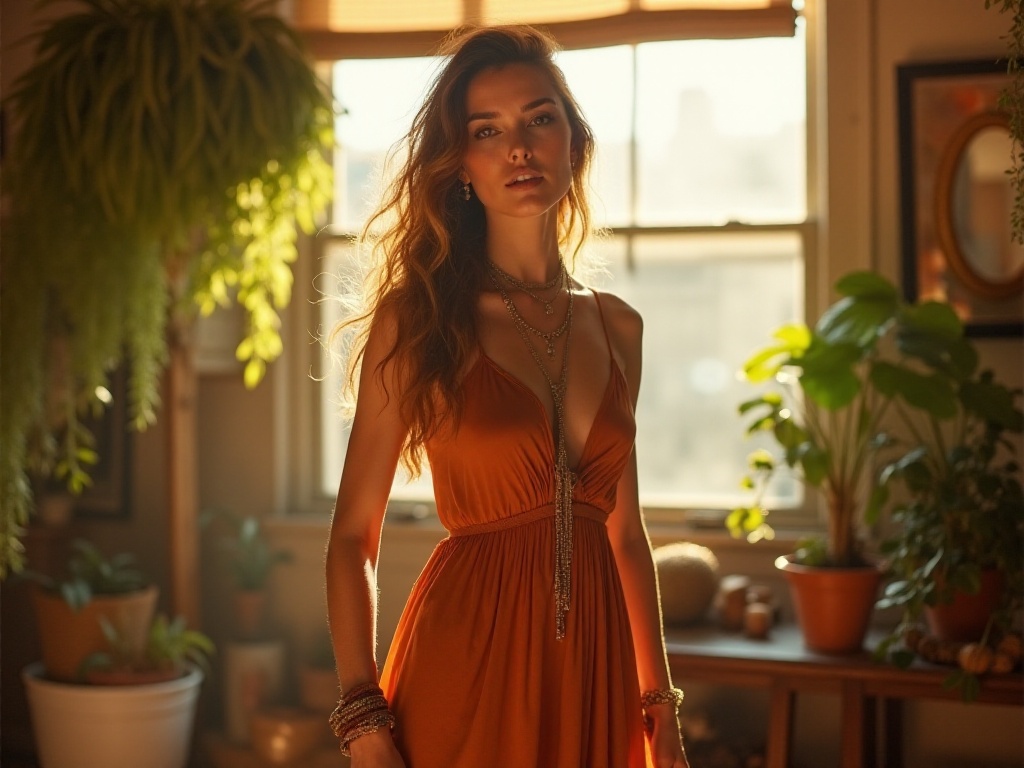
Holistic Thinking
The most important aspect of styling is having a holistic mindset. I've seen too many people only focus on whether individual pieces look good, but when combined they're uncoordinated. For example, I once saw a woman wearing a very formal suit with sneakers - while each piece was nice, the overall look was jarring.
To develop holistic thinking, the most important thing is to pay attention to the unity of occasion and style. For example, at formal occasions, it's best to choose formal pieces and maintain a consistent style from top to bottom. For casual occasions, you can choose more comfortable and relaxed pieces, but still need to pay attention to overall coordination.
I pay particular attention to this when putting together outfits. For example, if I'm wearing a formal shirt on top, I'll choose well-cut dress pants and pair them with heels; for a casual look, I'll choose a T-shirt with jeans and pair them with white sneakers, making the overall look coordinated.
Additionally, holistic thinking includes paying attention to proportions. Many people might not notice this, but appropriate proportions can make the overall look more coordinated. For example, if wearing a loose sweater on top, it's best to choose fitted pants below to avoid looking bulky; if wearing a more fitted top, you can choose wide-leg pants or an A-line skirt - these proportions will look more elegant.
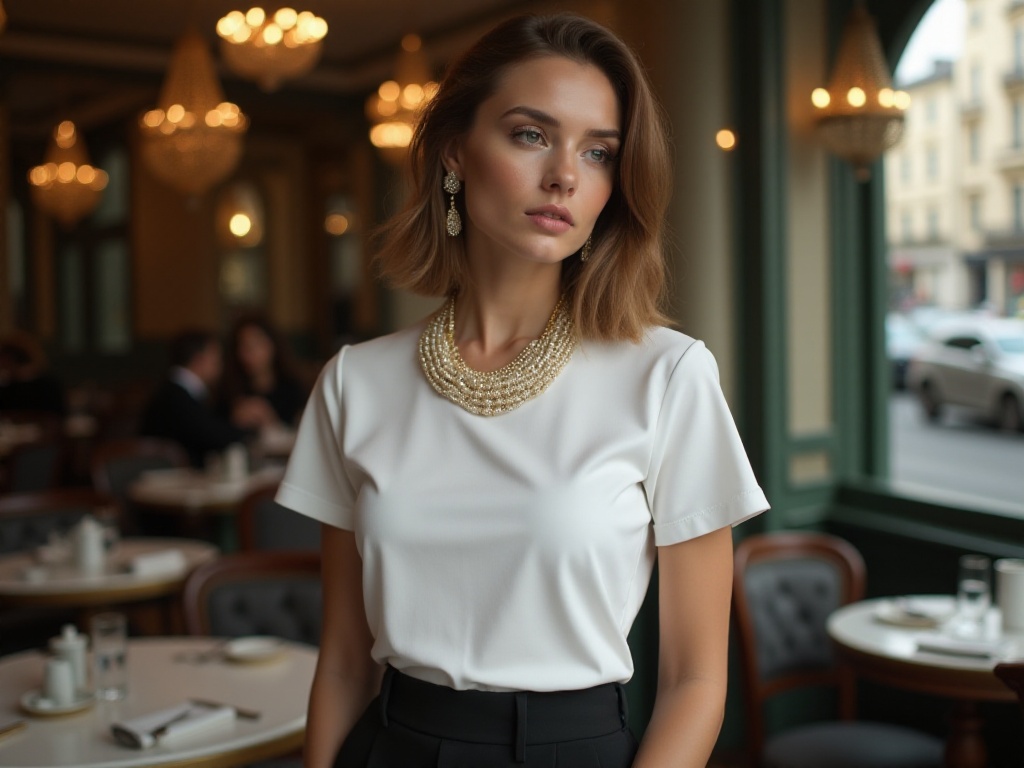
Personal Style
After discussing so many styling tips, finally I want to say that there are no absolute rights or wrongs in styling - the most important thing is finding a style that suits you. I used to be particularly fond of chasing trends, buying whatever social media influencers wore, but often ended up feeling uncomfortable. Later I slowly discovered that rather than pursuing trends, finding a style that suits you is more important.
Now I focus more on comfort and practicality, choosing clothes based on my lifestyle and personal character. For example, because I'm usually busy with work, I choose fabrics that are easy to maintain and don't wrinkle easily; because I often attend meetings, I prepare some formal but not too serious pieces; for weekend dates, I choose more casual, feminine combinations.
Remember, fashion is temporary, but style is eternal. Find a way of dressing that suits you, and you'll be able to handle various occasions with ease. Don't be led by trends, but choose clothes based on your preferences and needs. Gradually, you'll find your wardrobe becoming more refined and dressing becoming more effortless.
Looking back now, although I experienced many styling failures, it was these experiences that helped me better understand myself and know how to dress both presentably and comfortably. If you're also struggling with styling, try these methods I've mentioned. I believe you'll soon find your own way of dressing.
Do you have any unique styling insights to share? Everyone has their own clothing experiences and understanding, and I look forward to hearing your thoughts. Perhaps your experience will inspire others and help more people avoid some detours on their styling journey.





